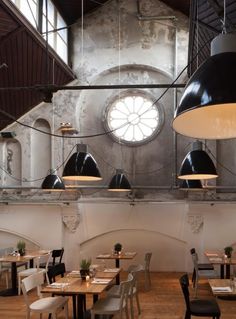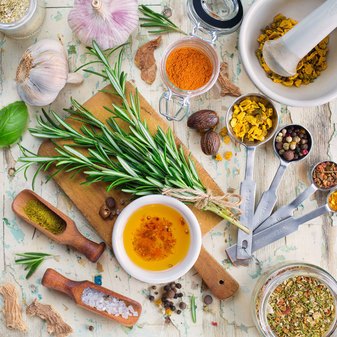 More tables means more covers, which means more revenue. It seems like a no-brainer, but hindsight is 20-20 when many owners take a closer look at their restaurants and realize they can fit in another table or two. Actions as small as moving around some furniture, or even just cleaning up the place, could lead to serious gains over time. Before moving any further, lets look at an example that could encompass a good number of eateries out there. I recently dined at a notable high-volume ethnic restaurant along Westwood Boulevard. The place had a 30-minute wait at 8:30 p.m. on a weekday, clearly doing well from a demand perspective. I couldn't help but notice, however, that a corner booth was being used as a storage shelf for extra tablecloths. The eyesore factor was a non-issue compared to the ridiculous amounts of money that this place was leaving on the table [pun slightly intended]. Factoring in a few assumptions, here's the calculation to show how a wasted table like this bleeds profit: 1 table x 4 covers/table x 17 turnovers/day x 7 days/week x $40 average check = nearly $20,000 a week. This amounts to more than $1 million in sales a year! As you can see, there's no room for error when it comes to maximizing your floor space. So take a look at your setup and assess whether you can make any improvements. Work tables into the mix Restaurants across the board are shifting away from fixed booths and toward tables. The primary reason: flexibility. I recently called a restaurant to make a reservation for eight, but was turned down because the place was 100% booths, and could only accommodate six at a time. The lost revenue here is mind-blowing. Not only is this place losing out on group reservations, which tend to bring in much higher average checks, but they've got serious capacity problems. Imagine two people walking in and getting the last available booth, set for six, and then a party of six showing up moments later, only to head back out the door due to the wait. To get the best of both worlds, many restaurants are going with booth 'hybrids,' where a continuous booth runs across an entire wall and tables are lined up with chairs on the other side. This allows at least half the party to enjoy the booth experience while still allowing you to optimize covers. Assess new furniture options Furniture is a huge expense, but in some cases could be well worth it. Some restaurants have large, lavish chairs that don't push in under the tables. While the space certainly entices guests, these chairs take up room that additional tables--and covers--could occupy. The sacrifice is fine at fine dining restaurants that place a much heavier focus on ambiance, but may not be the case for a higher-volume establishment where customers don't place the same value on large chairs. Since we've spent so much time on tables, also take note of whether your tables are the right size. I've seen numerous 2-top tables that are simply too long, coming at the cost of an entire row at some places. On the other end, nobody wants a table that's too small. If you've got big, decorative plates and your servers have trouble setting down an entree and a side dish next to one another, it could mean that guest's last visit. Of course all of these recommendations rely on the assumption that your restaurant is at capacity in the first place. If not, then best to look at refining your product, building your brand, and/or marketing your message to drive traffic. When assessing your floor space, be sure to follow all fire and safety regulations. But if you see that you've consistently got a line out the door, it's time to take a critical look at your floor and ask how you can make a small change for a million bucks.
0 Comments
 ‘Homemade’ is a big industry buzzword, motivating eateries across the country to shift a lot more work to in-house production. On the surface, this should boost the brand. Homemade items garner trust, showing that your restaurant dedicates time and attention to every aspect of its menu. Outsourcing, on the other hand, might give people the impression that you cut corners. But while it’s a nice touch, ‘homemade’ isn’t for everyone. Oftentimes it falls back to your core customer, your price point, and the direction you want to take your establishment. Whether you’re opening up a brand new place or looking to tweak your menu to fit the trend, consider a few points before directing your chefs on one particular trail. What is the in-house production cost? On the surface, producing in-house is cheaper than sourcing elsewhere in the same way that guests save money by cooking in instead of going out to your restaurant. Think beyond the basic food costs, though, to assess whether producing a certain item is worthwhile. Let’s say that you’re revamping your dessert program and want to add cheesecake to the menu: • What additional ingredients do you now need to buy in order to make cheesecake? What are the operational costs associated with this expansion? • Do you have the necessary storage capacity for cream cheese, graham cracker crumbles and extra butter? How will this affect your utility bills? • How many hours will your staff spend making cheesecake? Will you have to hire an additional chef? Compare these types of line items to your current liabilities. Food costs, labor for loading/unloading, logistics behind deliveries and storage are all factors to consider. From the very beginning you should know how any operational changes will affect the bottom line. You consider outside measures to evaluate ROI from there. Does the outside source have brand appeal? Sourcing from a renowned brand can be a big advantage, drawing in customers that might not otherwise have walked in through your doors. If you want to serve cheesecake, The Cheesecake Factory is the obvious brand partner of choice. Tread carefully, however, as these types of contracts often come at a price. Consider the following points to determine your ROI: • Compare the cost of a brand partnership with that of other third-party vendors. How many more cheesecake orders will you have to sell on a weekly basis in order to break even? • Consider your restaurant’s previous dessert category sales. Do you see potential from a brand-name partner to significantly lift the category as a whole? Sometimes a brand-name partnership can be all a restaurant needs to differentiate itself from its counterparts. And even if you have the budget, these partnerships should be kept to a minimum. You want your restaurant to retain its own identity. What would your guests think? If your restaurant aims to serve self-righteous millennials, then homemade is a surefire way to win over customers. Conversely, if you’re a roadside diner and attract a largely price-sensitive visitor base, you’re not going to turn too many heads by promoting yourself as a ‘from scratch’ restaurant. "Think critically and truthfully about your core customer, and whether you want to keep them or change your brand to attract a new profile." Think critically and truthfully about your core customer, and whether you want to keep them or change your brand to attract a new profile. A roadside diner could recognize major money coming in the surrounding area, and may want to transform into a premium brand as part of the transition. In this case, homemade cheesecake from natural ingredients would be a nice touch, if promoted correctly. All else equal, however, outsourcing cheesecake from a typical food vendor will reduce overhead without as much as a second glance from your loyalists.
Test conversion Whatever decision you do make, it should drive sales over the long term. If you are deciding whether to make an item in-house or outsource it, track sales data for that item a few months prior to the transition, then monitor sales over the next year to account for seasonality. From there you can evaluate if the change was worthwhile. If you’re looking for a complete rebrand, be sure to pace yourself in a way that you and your team can handle. A bustling kitchen may not adjust easily to making all of its sauces in-house at once. Taking things step by step and measuring results will allow you to properly move in the right direction.  The World Food Travel Association has just released its winners for the first annual FoodTrekking Awards for excellence in food and beverage. Presented to restaurants, wineries, breweries, tour operators and tourism boards, the FoodTrekking Awards serve to recognize establishments across the world that provide authentic experiences that bring out the best of their region. The 2017 FoodTrekking Awards will be accepting applications in the coming months. Those interested in applying can find out more on the contest page. Best Foodservice Experience Grand Prize: Restaurant Aanaar at the Hotel Kultahovi, Inari, Finland Runner Up: La Cuina del Vent, Catalonia, Spain Best Tour Operations Grand Prize: Turkish Flavours, Istanbul, Turkey Runner Up: Odyssey New Zealand, Napier New Zealand Runner Up: Italian Food Artisans, Santa Barbara, California, USA Best Beer Experience Grand Prize: BlackLab Brewhouse & Kitchen, Barcelona, Spain Runner Up: Brouwerij De Koninck, Antwerp, Belgium Best Wine Experience Grand Prize: Miguel Torres S.A., Barcelona, Spain Runner Up: Netofa Winery, Netofa, Israel Best Destination Experience Grand Prize: Louisville Convention & Visitors Bureau, Kentucky, USA Runner Up: Visit Helsinki, Finland Runner Up: Tourism Nova Scotia, Canada A note on interpreting the winners:
The World Food travel Association [WFTA] is a non-profit and non-governmental organization dedicated to food and drink tourism. For more information on the WFTA, visit them online. |
AuthorBenjamin Brown is a seasoned restaurant writer and hospitality consultant, serving up SoCal's hottest food news and reviews. Categories
All
Archives
June 2021
@Foodie_Biz |
|
Home
About
Blog
Consulting Tips
Contact
Legal
|
Foodie Biz provides restaurant news and reviews for the food community, as well as consulting advice for restaurant owners and other hospitality professionals.
Contact Foodie Biz for media opportunities and freelance consulting projects. Contact Foodie Biz |



